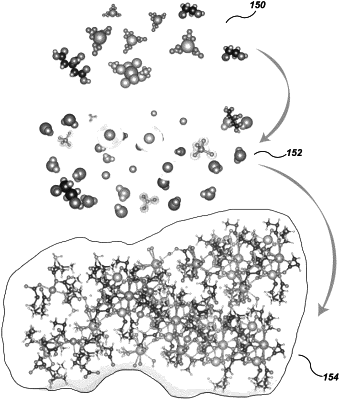| CPC B22F 9/26 (2013.01) [B22F 1/054 (2022.01); B22F 2201/013 (2013.01); B22F 2301/25 (2013.01); B22F 2301/45 (2013.01); B22F 2302/25 (2013.01); B22F 2304/054 (2013.01); B22F 2304/056 (2013.01); B22F 2304/058 (2013.01); B82Y 30/00 (2013.01); B82Y 40/00 (2013.01); H01M 4/9041 (2013.01)] | 27 Claims |

|
1. A method of forming a metal nanomaterial, comprising;
forming an aqueous precursor solution comprising a metal precursor and a metal oxide precursor, the metal precursor comprising a metal salt including ruthenium and the metal oxide precursor comprising samarium nitrate and cerium nitrate;
adding a complexing agent to the aqueous precursor solution;
hydrolyzing the metal precursor and the metal oxide precursor to form a sol;
heating the sol to form a gel;
calcining the gel to incorporate metal cations from the metal precursor into a metal oxide lattice from the metal oxide precursor;
exposing the calcined gel to a reducing agent to exsolve the metal from the metal oxide lattice; and
forming a metal nanomaterial comprising a metal of the metal salt and a metal oxide of the metal oxide precursor, a particle size of the metal in the metal nanomaterial determined by an amount of the complexing agent added to the aqueous precursor solution and the amount of the complexing agent controlling a hydrolysis rate of the metal cations in the aqueous precursor solution, the metal of the metal nanomaterial exhibiting a substantially uniform particle size.
|